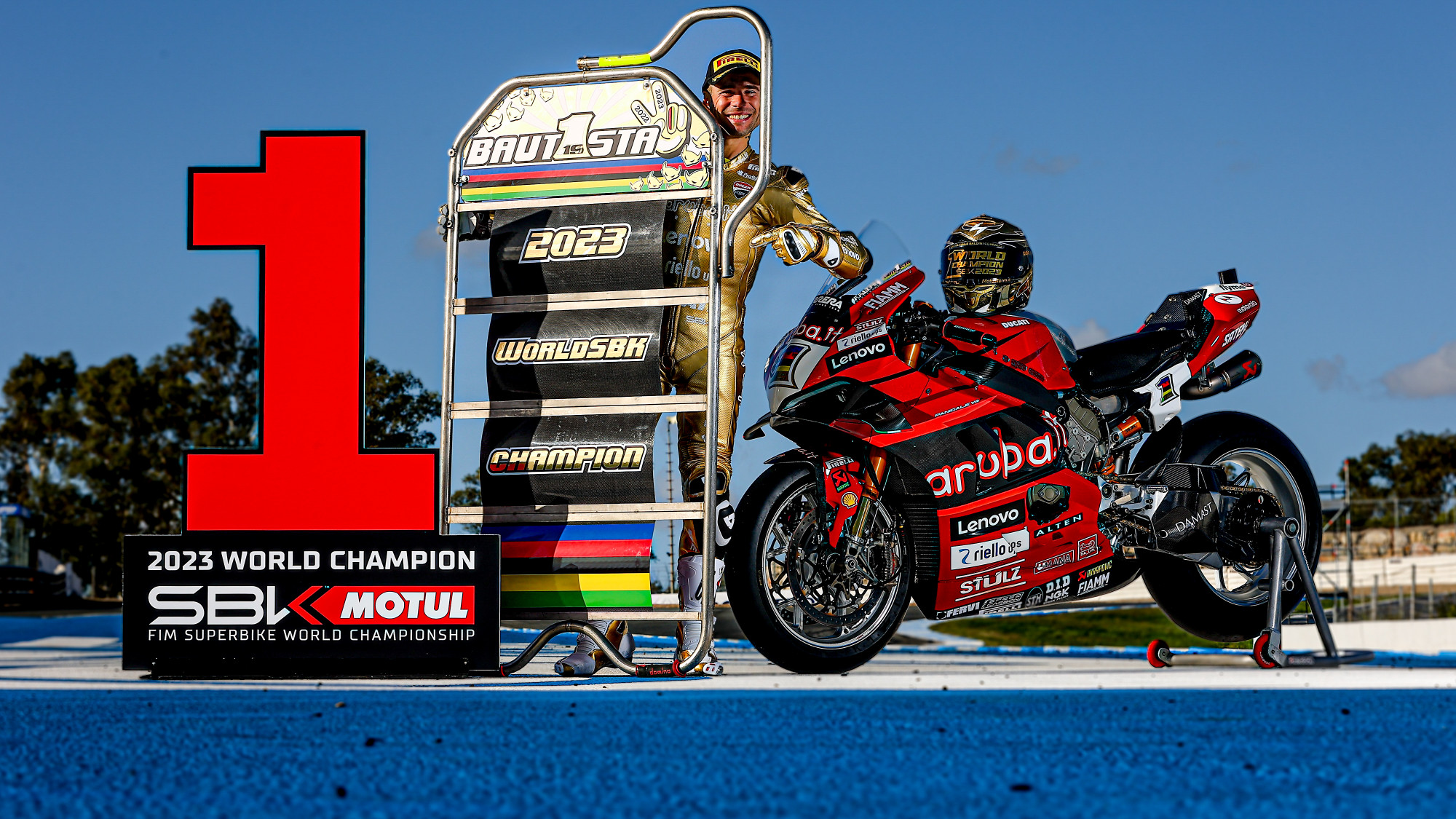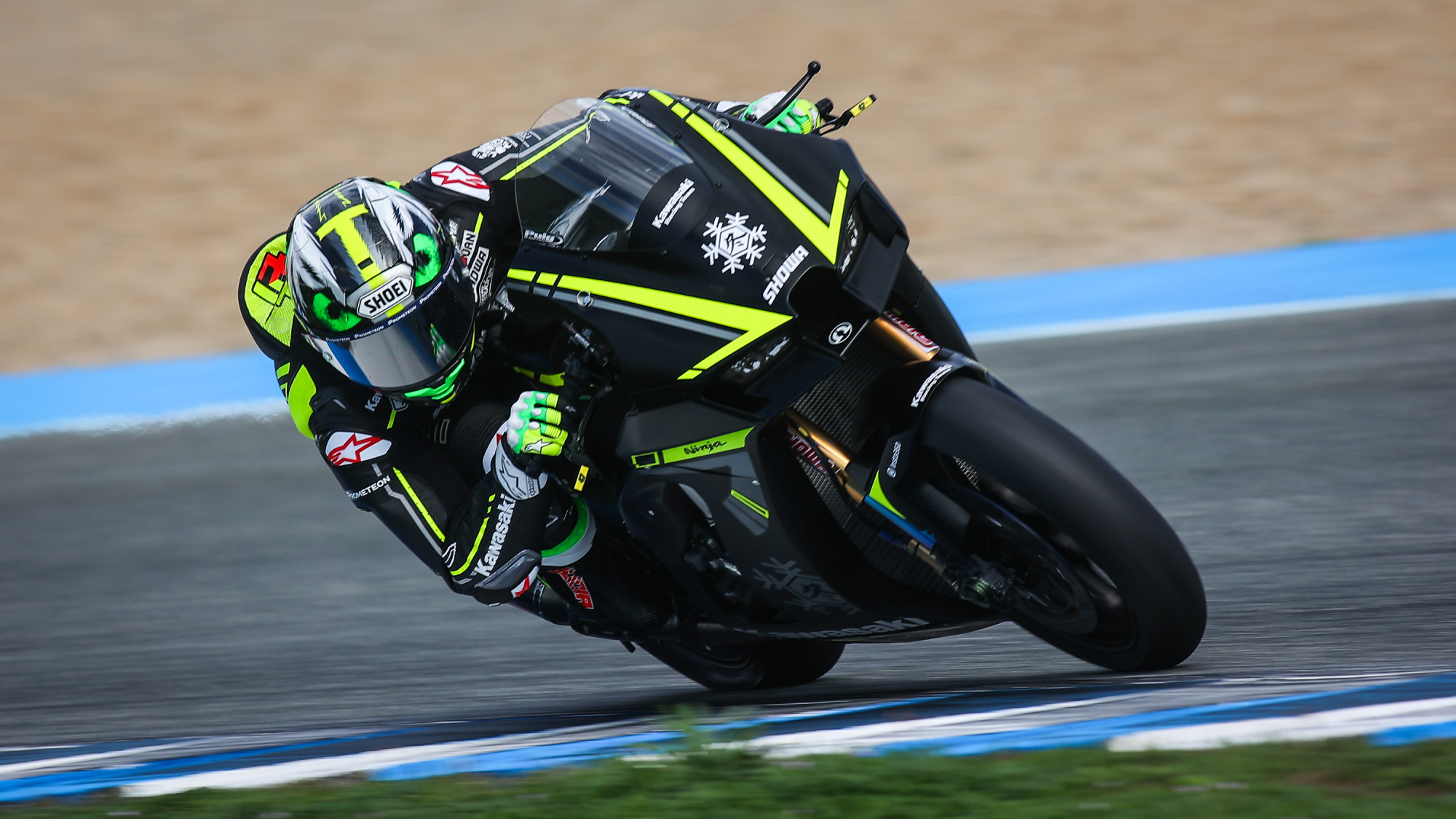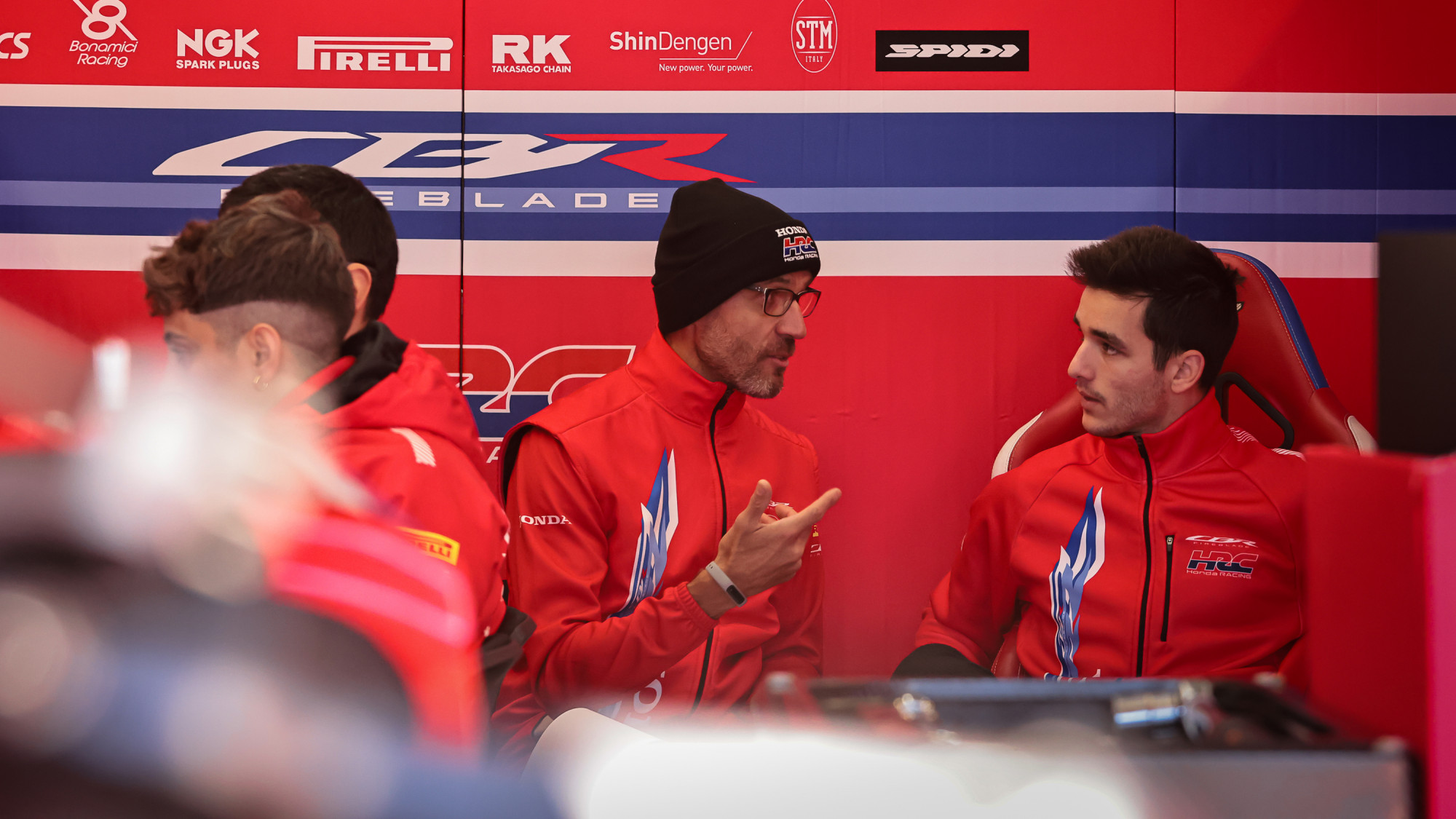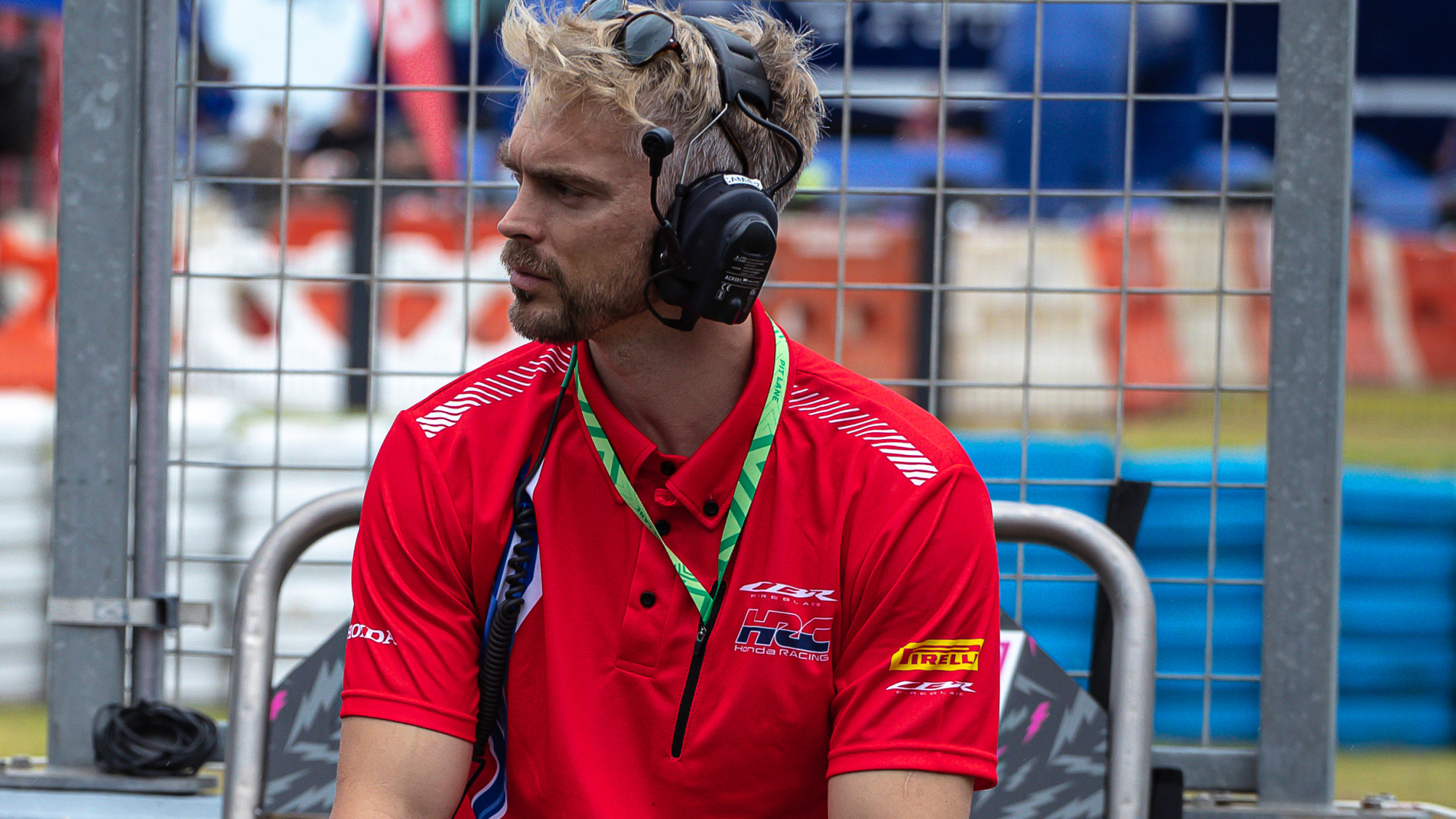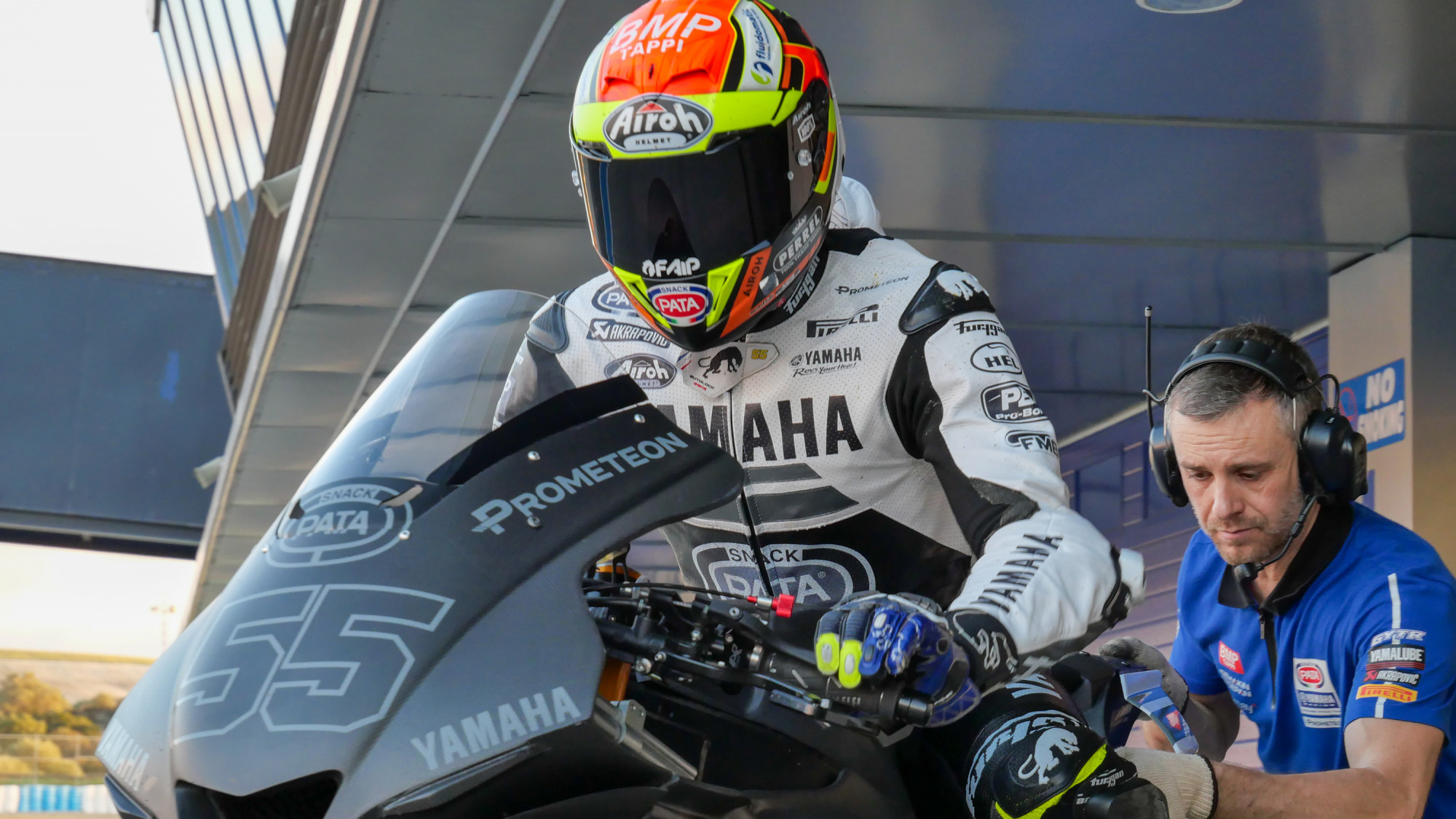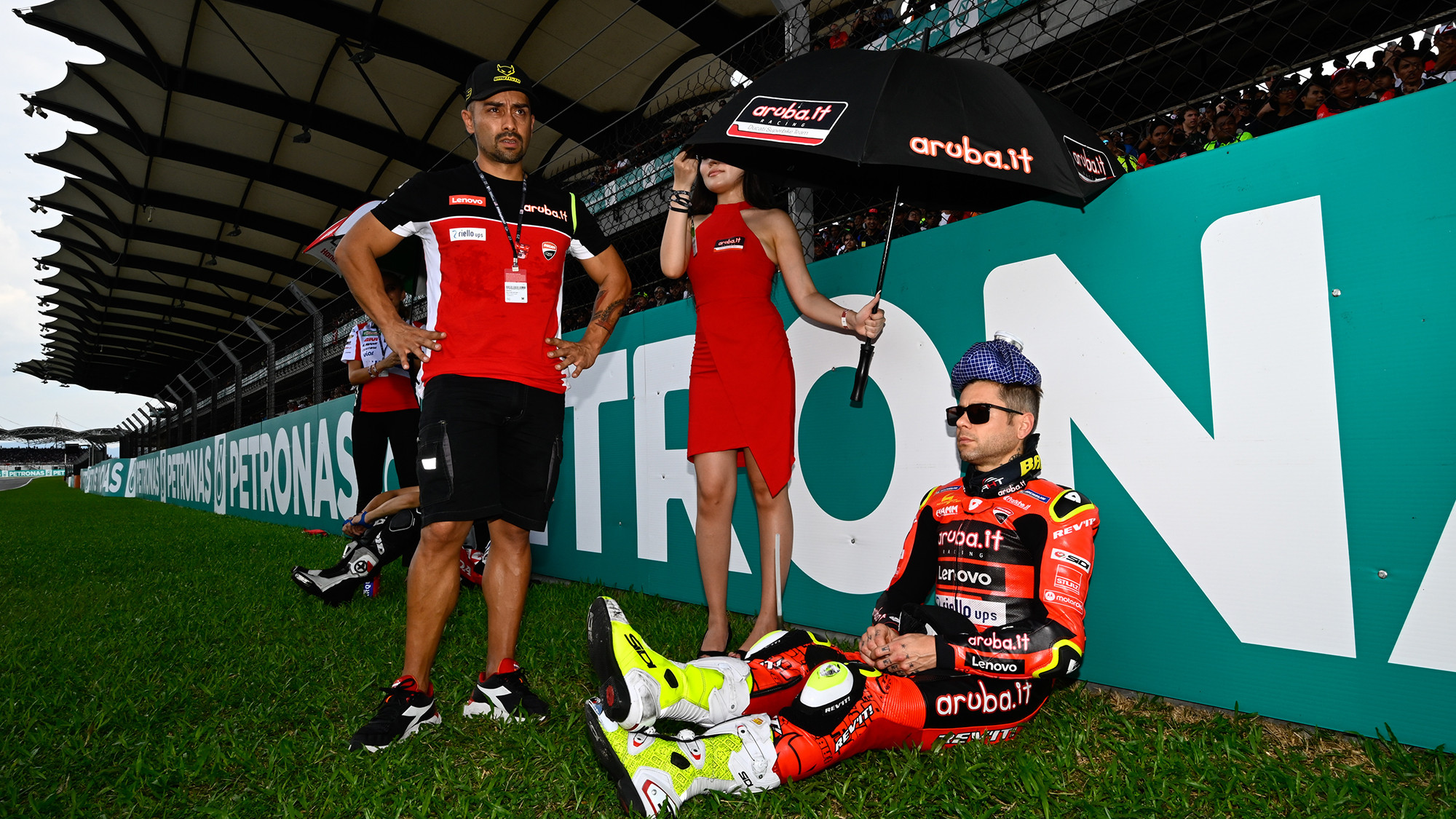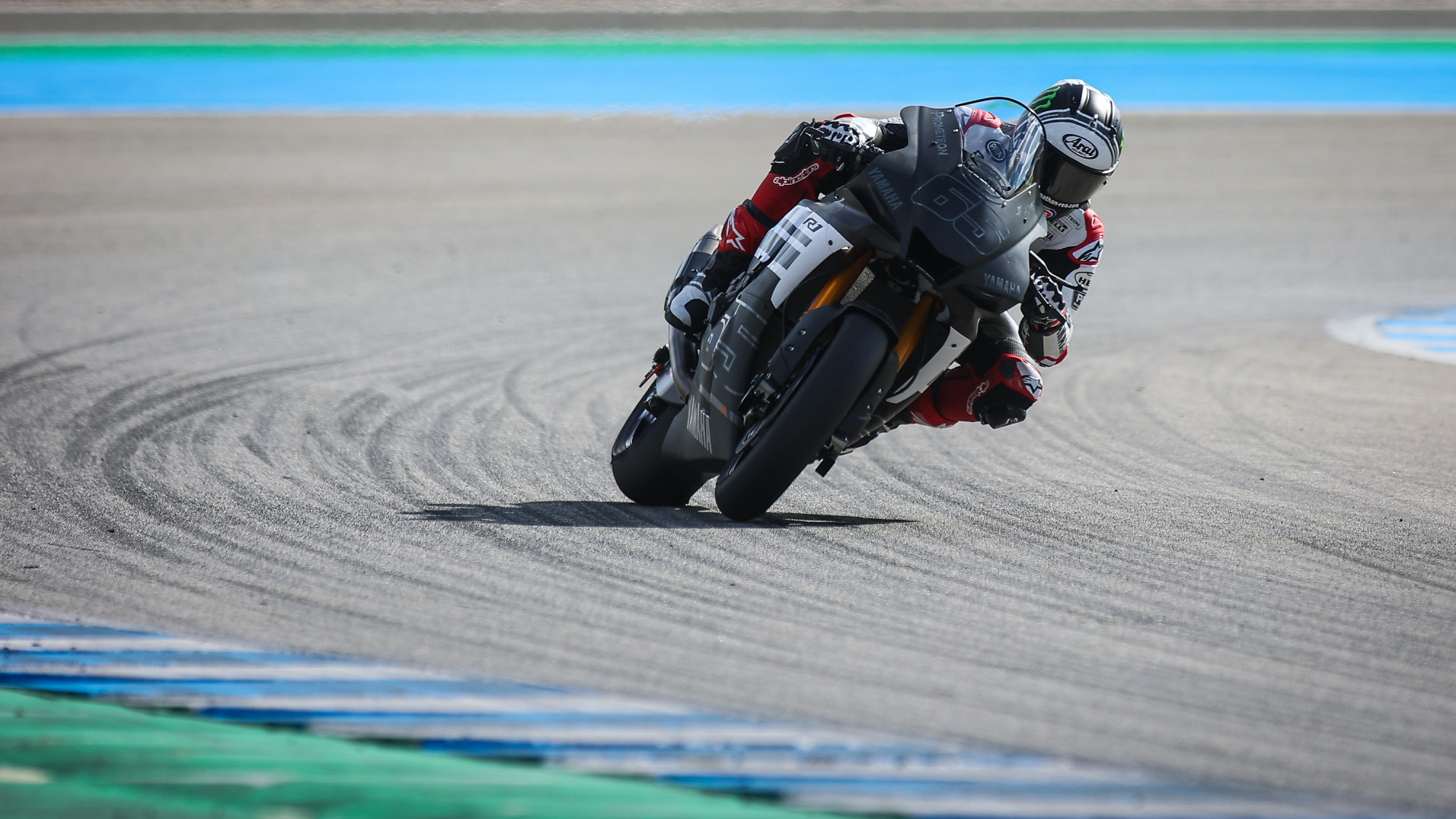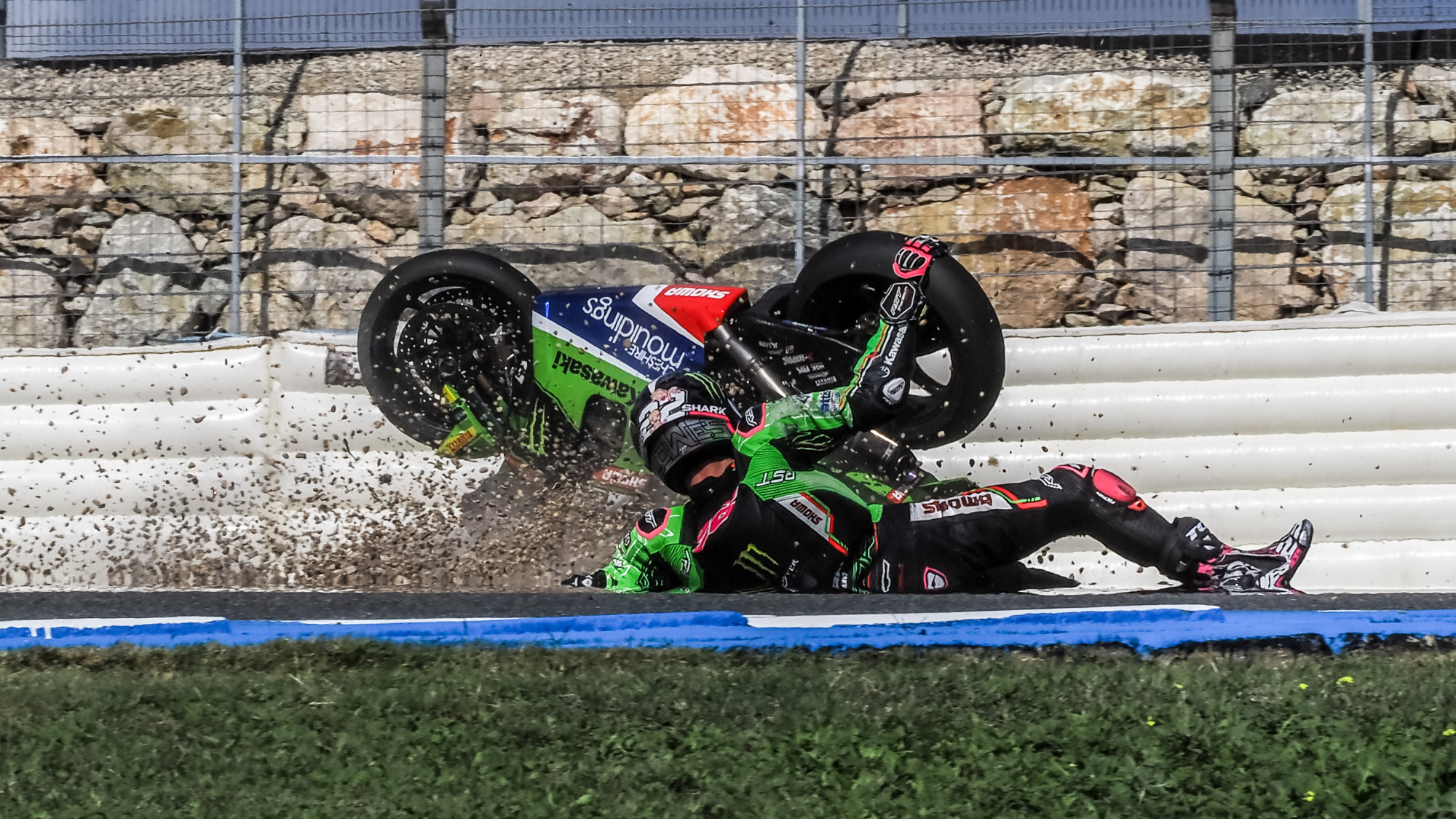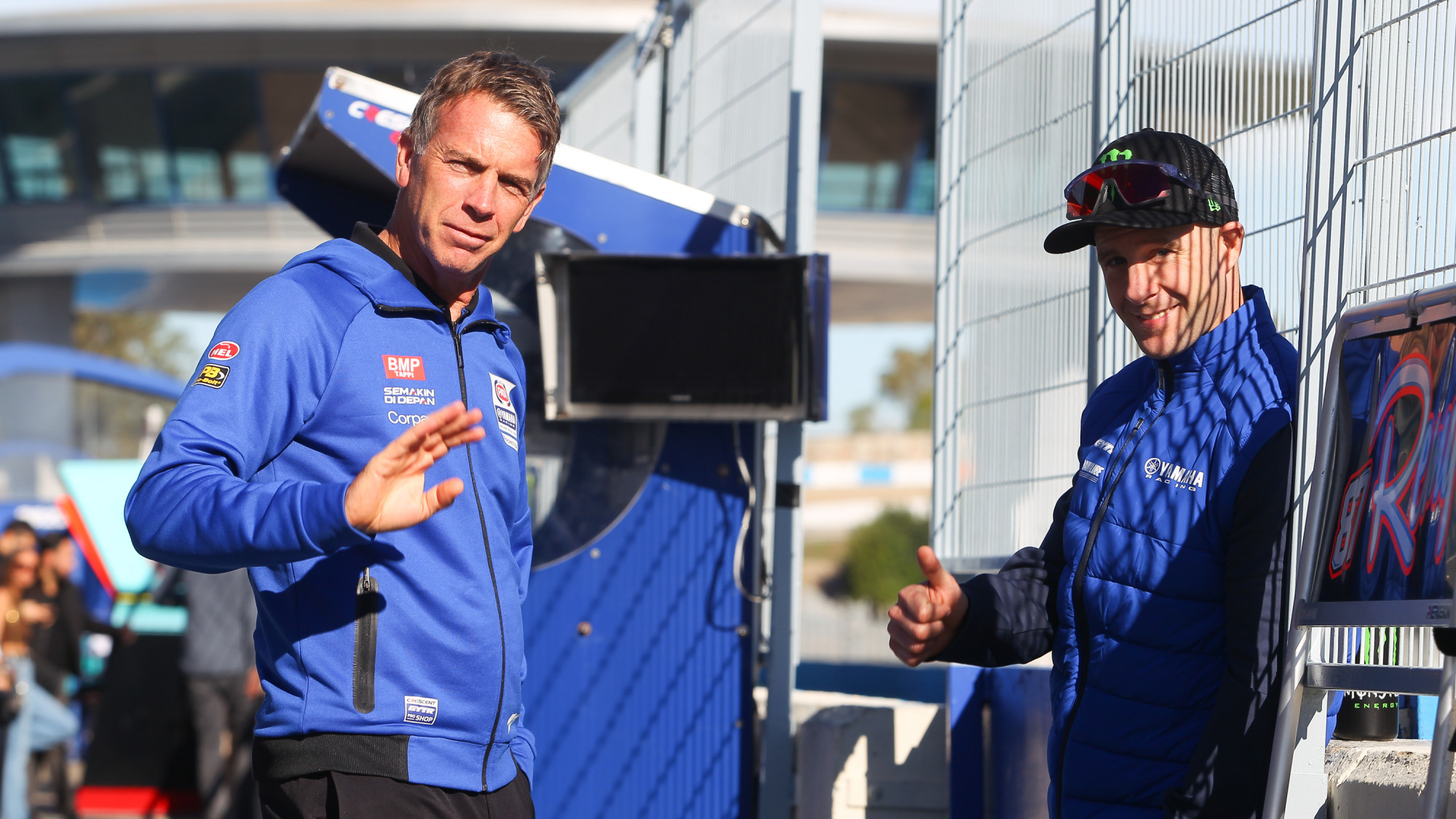All eyes are on… everything ahead of 2024! There are so many stories, headlines and topics, the 2024 MOTUL FIM Superbike World Championship is going to have some hype in the coming months. Meanwhile, one of those stories – at Honda – is developing quickly. In his final tests before leaving the team manager role, Leon Camier talks us through all the updates, what they exactly mean and how it should translate on track, whilst his replacement “will probably be known or announced maybe at the next test or soon after” and that “it will be someone from the MotoGP™ paddock but not someone who is known.”
NEW ITEMS: split throttle bodies, lighter crankshaft, different weight distribution and wings
Talking about the difference of the new bike, Camier was clear that better acceleration, deceleration, edge grip and traction are key areas, with split throttle bodies playing a big part: “There’s a few changes with the new bike; the split throttle bodies is something that’s a good step in the right direction for the race bike and what we want on track. The normal thing to expect is more edge grip and better connection when you first touch the gas because you’re only opening two cylinders, not four. Many other manufacturers are running this but for us, it’s something we wanted for the race bike. For the lighter crankshaft, it’s a small difference but we should expect a little bit better acceleration and deceleration. We have a different weight distribution of the bike; Honda wanted to go in this direction because it’s better for what we need for racing; it’s all going in the right direction.
“The first feelings with the bike are quite good, even though there are positives and negatives. With it being the first test, it’s good that the riders are feeling the positives and with the negatives, they’re things we have to work with. Setting the bike up, putting things in the right places… it’s normal that it takes time to smooth things out. Both riders need time to set it up for their style and their way of riding. First impressions are positive so we need to get through these two days, see where we are at the end of it and keep making a step forward.”
“With the lighter crankshaft, the normal thing is you have more acceleration but it’s about putting that power down. This is something that the split throttle bodies should help with, especially with the first touch of gas and first opening, creating a smoother, more tractable power which is something that is really important with Pirelli tyres and Superbike racing in general; you need to get the grip. Then, keep the grip going forward because if you break traction then you never get it back. There’s an optimal spin ratio that you have with every tyre and you have to play within that area. It’s important to manage the first opening of the throttle and first acceleration. This is all in that direction: to create grip and acceleration where we need it. Then, you go into the area of the wings and trying generate downforce, you don’t have so much wheelie and this is what we’re hoping to achieve with the aero package. Until we get up to speed with this bike and we learn it, we don’t know where we’re at.”
BIG STEPS FORWARDS: “It’s a lot more based on Pirelli’s… the changes that have been made have been good from a racing point of view”
A huge topic is whether or not the bike had been developed around Pirelli tyres instead of the usual development on other brands, Camier confirmed that it has had time on WorldSBK’s Official Tyre Supplier rubber: “It’s been on Pirellis for sure. I’d say it’s lot more based on Pirellis. What we’re looking at, the changes we’ve made and what we’re asking for in the race team. They’re going more in the direction that we’ve been asking for but it’s a working progress.
“From a team’s side, the changes that have been made have been good from a racing point of view and then we just need time to understand if it’s enough or not or what the next steps need to be going forward. Where we’re at right now, with the first test, we’ll need to go away from here, make changes – probably not for the next test as we’ll be too short of time – hopefully by the beginning of next year, there’ll be more changes. It’s important that this test indicates what we want for the next test and then we can make a decision on the race package for Australia.”
SUPER CONCESSION NOT INCORPORATED: “They’ve gone a slightly different direction”
With Honda having the super concession rule for 2022 and 2023, they didn’t incorporate that into 2024’s bike, opposite to how BMW operated at the start of the year: “It hasn’t been incorporated; they’ve gone a slightly different direction with what we learnt with the super concession but we don’t know yet until we see it on track and have a bit of time to play around with geometry and setup. We need some time to understand if this is the right direction as well but we’ll go from there.”
Talking about whether the bike itself is longer, as had been tried multiple times in the last few years, Camier explained: “It’s done in a different way with a different weight distribution; the centre of gravity is a little bit different. Overall length, I’m actually not sure where we are but I think it’s something similar but you can play around with that anyway. Alter the swingarm length a little bit and you can have a big change, so it’s just done in a slightly different way.”
COMPETITIVITY: will this actually means better results? “Theoretically, everything is going in the right direction”
“I’d love to say yes, but I don’t know the answer,” responded a coy Camier. “Theoretically, everything is going in the direction we expect but you have to put it on the bike and put it on the bike to see how the combination works together. Right now, first impressions are quite good; there are still some things that need to be worked on and improved. Until we have time on the bike to work on the setting and details, we’re not at the point to say whether it will be super competitive or not, it’s always working progress.”
PERSONNEL: “There’re many Japanese engineers here, predominantly from the R&D”
With more Japanese engineers present at this test than at any other, as well as scheduled to be present at the forthcoming tests, Camier detailed why and how important it is: “There’re many Japanese engineers here, predominantly from the R&D department which is the development side and who develop the bike in the background in Japan. Then, there are more here that are understanding what’s going on and setting the bike up. They were with Tetsuta Nagashima for two days and they gave us the bikes this morning. The race riders jumped on it this morning and will go their direction with it. They need time to go over the data with the goal of making changes for the next one. Then, with a test at the end of December, with the test rider, they’ll make another step with the items. The race riders will go back on track in Europe in January and then hopefully, they’ll be some new items again to take another step forward. At the moment, the test rider is Tetsuta but for the future, I don’t know the answer.”
Get your must-have tool for all things WorldSBK related with the WorldSBK VideoPass!
Source: WorldSBK.com


